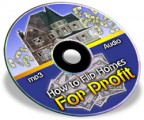Table of Contents
Contents
1. What is “House Flipping?” 4
The (very abridged) History of Real Estate 5
A Brief History on House Flipping 8
2. Who is this Book For? 10
What Tools do I Need? 10
What about Money? 11
3. How do I Find a House to Flip? 12
Find a Real Bargain 12
Get To Know the Area 12
Inspection Time! 13
Don’t Jump the Gun 15
4. The Process of Property Flipping 16
Financial Planning 16
Fixing or Straight Flipping 18
Procure a Proficient Plumber 18
Encounter an Excellent Electrician 19
Catch a Competent Contractor 20
Get Ready to Sell! 21
Acquire and Appraisal 21
Find a Buyer 22
Complete the Sale 24
5. House Flipping Laws 26
Mortgage Fraud 26
Federal Regulations 26
State Laws 28
6. The Benefits of House Flipping 29
Profit 29
Contingency 30
Satisfaction 30
Self-Employment 30
7. The Risks Involved 32
General Risks & Obstacles 32
Potential Tax Consequences 35
8. Alternative to Fast Flipping 38
Buy and Hold 38
9. Conclusion 39
Sample Content Preview
1. What is “House Flipping?”
You may have heard the term on television (there are a lot of popular house flipping TV shows these days) but not know exactly what it means. The basic principle is pretty simple: House flipping is essentially just buying a house dirt cheap (foreclosure, bad condition, etc.) and then selling it for a lot more than you paid for it.
It sounds simple and to some extent it is but it’s real estate and with any real estate investment there are risks involved. It’s essential to be able to weigh the risks and benefits and develop a good understanding of what you’re getting into. Before we delve in to the tactics and paradigms of real estate and house flipping, let’s take a brief look at the history of real estate and the beginnings of house flipping.
Other Details- 25 Articles (TXT, DOC)
- Ebook (PDF, DOC), 39 Pages
- Marketing Materials (PDF, DOC)
- File Size: 944 KB














